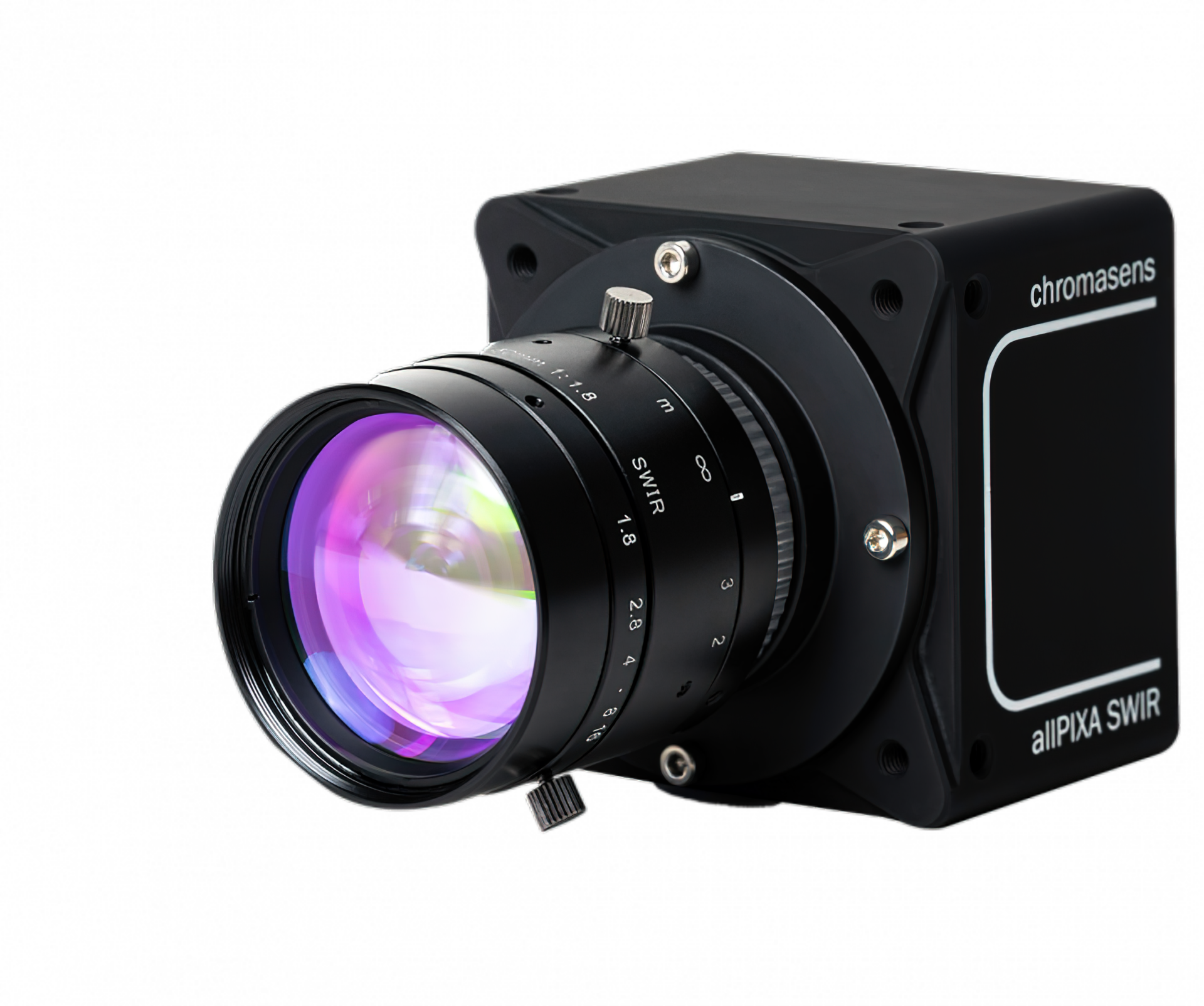Of the 380 million tons of plastic waste being produced annually, only 9% is recycled worldwide. By accurately identifying and classifying plastics based on their spectral properties, Chromasens allPIXA SWIR Line Scan cameras, combined with the company’s ultra-bright Corona II LED lighting, can contribute to more cost-efficient, higher-purity recycling outcomes and better plastic waste management.
Available in a choice of GenICam-compliant GigE Vision or CameraLink interfaces, the allPIXA SWIR features an InGaAs uncooled sensor capable of handling wavelengths from 950 to 1,700 nm while its compact footprint permits integration in space-limited recycling plants. The sensor has resolutions of 512 or 1k and pixel sizes of 25 µm and 12.5 µm, along with high sensitivity and a line frequency of 40 kHz.
Plastics may look identical to the human eye yet differ significantly in the SWIR spectrum, as various types of plastics absorb and reflect radiation in different ways. These types of plastics include polyethylene terephthalate (PET), high-density polyethylene (HDPE), polyvinyl chloride (PVC), low-density polyethylene (LDPE), PP, polystyrene (PS), expanded polystyrene (EPS), acrylonitrile butadiene styrene (ABS), polylactic acid (PLA), and nylon 6.
These different types of plastics can be distinguished from each other by the allPIXA SWIR camera, therefore facilitating accurate separation on a conveyor belt by an array of air jets. To reach a finer screening, this step can be repeated several times, achieving an outcome of high purity of the sorted plastics. Detected foreign particles mixed with the plastic are discharged with minimal material loss before the sorted fractions are transported to the next processing stage.
While the various plastic types all have unique spectral properties in the SWIR range, due to their similar chemical structures these spectral differences are minimal. To achieve a good separation, the brightest, most homogeneous LED linescan lighting is required when deploying SWIR cameras, especially at high conveyor belt speeds used at recycling plants.
Chromasens Corona II LED illumination offers a wide range of solutions for line scanning, including dark field LED illumination modules for ultra-fast SWIR inspection and sorting processes. For materials that differ in spectral range within the working range of a SWIR camera, narrowband LED light sources provide more homogeneous light distribution and better differentiation characteristics than broadband halogen light sources.
With their patented reflector technology, Chromasens Corona II LED systems deliver higher radiant power than conventional halogen lights, translating into very high efficiency with less image noise and more accurate inspection results in the recognition software. With a runtime of up to 25,000 operating hours, Chromasens Corona II LED systems also require less maintenance and thus lower service costs for the user.











